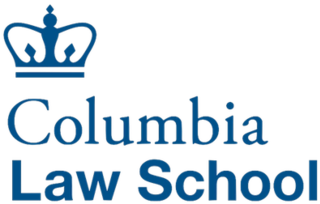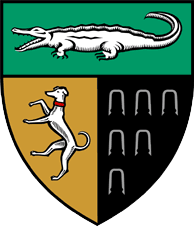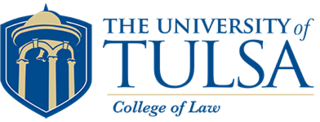
Columbia Law School (CLS) is the law school of Columbia University, a private Ivy League university in New York City. It was founded in 1858 as the Columbia College Law School. The university was known for its legal scholarship dating back to the 18th century. Graduates of the university's colonial predecessor, King's College, include such notable early-American legal figures as John Jay, the first chief justice of the United States, and Alexander Hamilton, the first Secretary of the Treasury, who were co-authors of The Federalist Papers.

The University of Colorado Boulder is a public research university in Boulder, Colorado, United States. Founded in 1876, five months before Colorado became a state, it is the flagship university of the University of Colorado system. CU Boulder is a member of the Association of American Universities and is classified among R1: Doctoral Universities – Very high research activity.

Yale Law School (YLS) is the law school of Yale University, a private research university in New Haven, Connecticut. It was established in 1824. The 2020–21 acceptance rate was 4%, the lowest of any law school in the United States. Its yield rate of 87% is also consistently the highest of any law school in the United States.

Vermont Law and Graduate School (VLGS) is a private law and public policy graduate school in South Royalton, Vermont. It offers several degrees, including Juris Doctor (JD), Master of Laws (LLM) in Environmental Law, Master of Environmental Law and Policy (MELP), Master of Food and Agriculture Law and Policy (MFALP), Master of Energy Regulation and Law (MERL), and dual degrees with a diverse range of institutions. According to the school's 2018 ABA-required disclosures, 61.5% of the Class of 2018 obtained full-time, long-term, JD-required employment nine months after graduation.

Loyola Law School is the law school of Loyola Marymount University, a private Catholic university in Los Angeles, California. Loyola was established in 1920.
The Boston University School of Law is the law school of Boston University, a private research university in Boston. Established in 1872, it is the third-oldest law school in New England, after Harvard Law School and Yale Law School. Approximately 630 students are enrolled in the full-time J.D. degree program and about 350 in the school's five LLM degree programs. BU Law was one of the first law schools in the country to admit students to study law regardless of race or gender.
The University of Alabama School of Law, located in Tuscaloosa, Alabama is the only public law school in the state. It is one of five law schools in the state, and one of three that are ABA accredited. According to Alabama's official 2017 ABA-required disclosures, 84% of the Class of 2017 obtained full-time, long-term, JD-required employment nine months after graduation. An additional 8.4% of the Class of 2017 obtained JD-advantage employment.

The University of Maine School of Law is a public law school in Portland, Maine. It is accredited by the American Bar Association and is Maine's only law school. It is also part of the University of Maine System. The school's current dean is Leigh Saufley, who assumed the post in 2020. Until 1972 the School of Law was located at 68 High Street, Portland. In 1972, the School of Law moved to the University of Maine School of Law Building, which is adjacent to the University of Southern Maine's Portland campus. In 2023, the Law School moved to 300 Fore Street, on the waterfront of downtown Portland.

The University of Tulsa College of Law is the law school of the private University of Tulsa in Tulsa, Oklahoma. For 2023, U.S. News & World Report ranked the University of Tulsa College of Law at No. 111 among all law schools in the United States. It is the only law school in the Tulsa Metropolitan Area and northeastern Oklahoma.
The Valparaiso University Law School was the law school of Valparaiso University, a private university in Valparaiso, Indiana. Founded in 1879, the school was accredited by the American Bar Association in 1929 and admitted to the Association of American Law Schools in 1930. In October 2016, the ABA censured the school for admitting applicants who did not appear capable of satisfactorily completing the school's program of legal education and being admitted to the bar. One year later, the school suspended admissions and shut down after the last class graduated in 2020.

The University of Wyoming College of Law is the law school of the University of Wyoming and the only law school located in Wyoming. It is situated in the Rocky Mountains in Laramie, Wyoming at 7,165 ft. between the Laramie Mountains and Snowy Range Mountains. Frequently, it is referred to as "Law at its Highest Point". Established in 1920, the law school offers the J.D. degree in law, as well "a joint JD/MA in Environment and Natural Resources and joint degrees in JD/MPA and JD/MBA. Other electives include coverage of trial and appellate practice, business planning, estate planning, corporate and commercial law, administrative law, consumer law, international law, Indian law, health law, and education law."

The Gonzaga University School of Law is the professional school for the study of law at Gonzaga University. Established in 1912, the Jesuit-affiliated law school has been fully accredited by the American Bar Association since 1951, and is a member of the Association of American Law Schools.

The Sandra Day O'Connor College of Law is the law school at Arizona State University in Phoenix, Arizona. The school is located in the Beus Center for Law and Society on ASU's downtown Phoenix campus. Created in 1965 as the Arizona State University College of Law upon recommendation of the Arizona Board of Regents, with the first classes held in the fall of 1967. The school has held American Bar Association accreditation since 1969 and is a member of the Order of the Coif. The school is also a member of the Association of American Law Schools. In 2006, the law school was renamed in honor of Phoenix resident, Stanford graduate, and retired Supreme Court Justice Sandra Day O'Connor.

The Sturm College of Law is the professional graduate law school of the University of Denver. It is one of two law schools in the state of Colorado. Founded in 1892, the Sturm College of Law was one of the first in America's Mountain West. The college is located on the University of Denver's campus, about seven miles south of downtown Denver. According to Denver Law's 2017 ABA-required disclosures, 67.9% of the Class of 2017 obtained full-time, long-term, JD-required employment nine months after graduation, excluding solo practitioners.
David Harding Getches was dean and Raphael J. Moses Professor of Natural Resources Law at the University of Colorado Law School in Boulder, Colorado. He taught and wrote on water law, public land law, environmental law, and Indian law.

Creighton University School of Law, located in Omaha, Nebraska, United States, is part of the Jesuit Creighton University.

William & Mary Law School, formally the Marshall-Wythe School of Law, is the law school of the College of William & Mary, a public research university in Williamsburg, Virginia. It is the oldest extant law school in the United States, having been founded in 1779 at the urging of alumnus Thomas Jefferson. As of 2023, it has an enrollment of 606 full-time students seeking a Juris Doctor (J.D.) or a Master of Laws (LL.M.) in the American Legal System, a two or three semester program for lawyers trained outside the United States.

The University of Missouri School of Law is the law school of the University of Missouri. It is located on the university's main campus in Columbia, forty minutes from the Missouri State Capitol in Jefferson City. The school was founded in 1872 by the Curators of the University of Missouri. Its alumni include governors, legislators, judges, attorneys general, and law professors across the country. According to Mizzou Law's 2016 ABA-required disclosures, 82 percent of the 2016 class obtained full-time, long-term, JD-required employment nine months after graduation.

Wake Forest University School of Law is the law school of Wake Forest University, a private research university in Winston-Salem, North Carolina. Established in 1894, Wake Forest University School of Law is an American Bar Association (ABA) accredited law school and is a member of the Association of American Law Schools (AALS). The current dean is Andrew R. Klein.
The Native American Rights Fund (NARF) is a non-profit organization, based in Boulder, Colorado, that uses existing laws and treaties to ensure that U.S. state governments and the U.S. federal government live up to their legal obligations. NARF also "provides legal representation and technical assistance to Indian tribes, organizations and individuals nationwide."
















